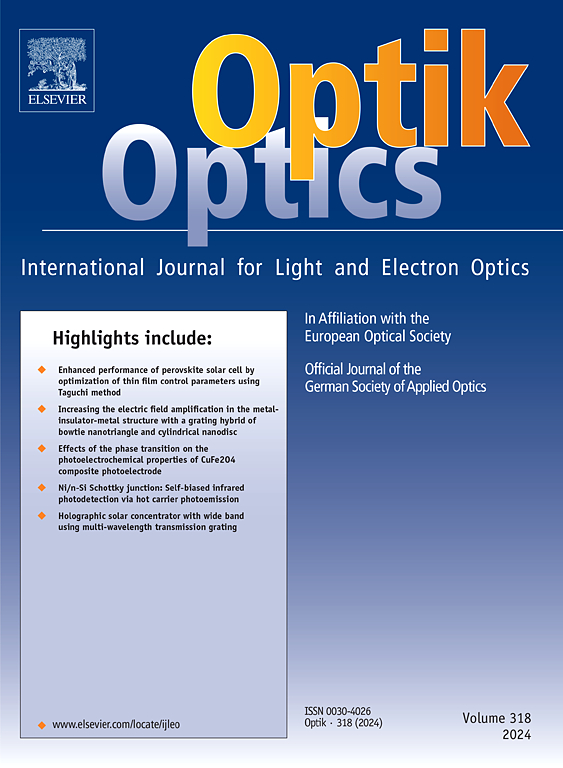双偏振和费米能级可调谐等离子体诱导透明太赫兹超表面用于高性能传感应用
IF 3.1
3区 物理与天体物理
Q2 Engineering
引用次数: 0
摘要
先前的研究已经证实,黑磷(BP)可以提高传感器的灵敏度,促进等离子体诱导透明(PIT)效应。然而,基于bp的PIT传感器通常具有较差的可调性和较低的性能值(FOM)。为了克服这些限制,本文提出了一种基于石墨烯-黑磷(GP-BP)杂化结构的高灵敏度和可调谐的PIT太赫兹超表面。超表面包括两个相同的图案层,每个层由一个交叉形谐振器与一个闭合矩形环形谐振器耦合组成。利用时域有限差分(FDTD)模拟,我们证明了PIT传输窗口是由这些结构的亮模式之间的耦合产生的。通过将环境折射率从1.0变化到1.7,超表面在太赫兹波段的最大灵敏度为4.22 THz/RIU, FOM为7.495。此外,BP中电子掺杂的增加会引起传感器透射谱的显著红移。通过调整太赫兹波极化和石墨烯费米能级,可以动态调制PIT共振频率。此外,透射光谱对入射角的变化表现出最小的敏感性。这些特点突出了所提出的传感器在太赫兹生物传感应用中的巨大潜力。本文章由计算机程序翻译,如有差异,请以英文原文为准。
Dual-polarization and Fermi-level tunable plasmons induce transparency terahertz metasurface for high-performance sensing applications
Prior research has established that black phosphorus (BP) enhances sensor sensitivity and facilitates the plasmon-induced transparency (PIT) effect. However, BP-based PIT sensors typically suffer from poor tunability and low figures of merit (FOM). To overcome these limitations, this paper proposes a highly sensitive and tunable PIT terahertz metasurface based on a graphene-black phosphorus (GP-BP) hybrid structure. The metasurface comprises two identical patterned layers, each consisting of a cross-shaped resonator coupled with a closed rectangular ring resonator. Using finite-difference time-domain (FDTD) simulations, we demonstrate that the PIT transmission window arises from the coupling between the bright modes of these structures. By varying the ambient refractive index from 1.0 to 1.7, the metasurface achieves a maximum sensitivity of 4.22 THz/RIU and an FOM of 7.495 in the terahertz band. Furthermore, increasing electron doping in BP induces a significant red shift in the sensor's transmission spectrum. The PIT resonance frequency can also be dynamically modulated by adjusting the terahertz wave polarization and the graphene Fermi level. Additionally, the transmission spectrum exhibits minimal sensitivity to variations in the incident angle. These characteristics highlight the proposed sensor's significant potential for terahertz biosensing applications.
求助全文
通过发布文献求助,成功后即可免费获取论文全文。
去求助
来源期刊

Optik
物理-光学
CiteScore
6.90
自引率
12.90%
发文量
1471
审稿时长
46 days
期刊介绍:
Optik publishes articles on all subjects related to light and electron optics and offers a survey on the state of research and technical development within the following fields:
Optics:
-Optics design, geometrical and beam optics, wave optics-
Optical and micro-optical components, diffractive optics, devices and systems-
Photoelectric and optoelectronic devices-
Optical properties of materials, nonlinear optics, wave propagation and transmission in homogeneous and inhomogeneous materials-
Information optics, image formation and processing, holographic techniques, microscopes and spectrometer techniques, and image analysis-
Optical testing and measuring techniques-
Optical communication and computing-
Physiological optics-
As well as other related topics.
 求助内容:
求助内容: 应助结果提醒方式:
应助结果提醒方式:


